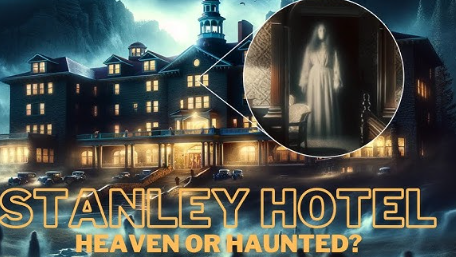In the crisp mountain air of Estes Park, Colorado, where the Rocky Mountains pierce the sky, stands a architectural marvel that breathes with stories untold. The Stanley Hotel isn't just a building—it's a living, breathing entity that has captured the imagination of millions, serving as the legendary inspiration for Stephen King's terrifying novel "The Shining" and a beacon for paranormal enthusiasts worldwide.
A Haunting Beginning
Constructed in 1909 by Freelan Oscar Stanley, a tuberculosis survivor seeking healing in Colorado's pristine environment, the hotel was initially a testament to human resilience. Stanley, a wealthy inventor from Maine, created more than just a luxurious mountain retreat—he inadvertently crafted a portal between the world of the living and something far more mysterious.
The Architectural Marvel with Supernatural Whispers
The hotel's Georgian-style architecture, with its stark white facade and sweeping mountain views, belies the supernatural energies that pulse within its walls. Each room tells a story, each corridor echoes with whispers from another time. Guests don't just stay at the Stanley—they become part of its intricate, supernatural narrative.
Paranormal Hotspot: More Than Just Legends
What sets the Stanley Hotel apart isn't just its stunning location or historical significance, but its reputation as one of the most consistently active paranormal locations in the United States. Numerous documented encounters have transformed it from a mere hotel to a supernatural research destination.
Ghostly Residents: More Permanent Than Guests
Several specific spirits are said to permanently reside within the Stanley's walls:
- Elizabeth Wilson, the hotel's head housekeeper from the early 1900s, reportedly still tends to rooms, occasionally appearing to straighten linens or move objects
- Mr. Stanley himself is rumored to wander the music room, still playing his beloved piano
- Children's laughter echoes through the hallways, with spectral children seen playing on the fourth floor
Stephen King's Fateful Night
In 1974, Stephen King and his wife Tabitha spent one night at the Stanley Hotel—an experience that would fundamentally alter horror literature forever. Staying in room 217, King was struck by the hotel's isolated, eerie atmosphere. That single night inspired "The Shining," transforming the Stanley from a regional curiosity to a global supernatural landmark.
The Room that Inspired a Horror Classic
Room 217 has become a pilgrimage site for horror fans and paranormal researchers. The room where King's imagination was set ablaze now serves as both a tourist attraction and a potential supernatural hotspot, with guests reporting unexplained phenomena ranging from mysterious sounds to spectral appearances.
Scientific Investigations and Paranormal Research
Unlike many purported haunted locations, the Stanley Hotel embraces its supernatural reputation. They offer ghost tours, paranormal investigation packages, and actively encourage scientific exploration of its spectral residents.
Beyond Tourist Attraction: A Serious Research Site
Professional paranormal investigators have documented numerous unexplained electromagnetic fluctuations, audio recordings of disembodied voices, and photographic evidence that challenges conventional understanding of reality.
The Psychology of Supernatural Attraction
The Stanley's allure goes beyond mere ghost stories. It represents a profound human fascination with the unknown, a desire to understand what lies beyond our immediate perception. Guests are drawn not just by the possibility of a supernatural encounter, but by the hotel's ability to make the invisible visible.
A Thin Veil Between Worlds
Researchers suggest that certain locations, like the Stanley, might exist at points where the barrier between physical and spiritual realms becomes remarkably thin. The hotel's mountainous location, its historical trauma, and its architectural design might contribute to these supernatural manifestations.
More Than Just Haunting: A Cultural Icon
Today, the Stanley Hotel transcends its original purpose. It's a cultural landmark, a historical preservation, a paranormal research center, and a testament to human curiosity about what exists beyond our understanding.
Visitors arrive seeking more than just accommodation—they come searching for a connection to something greater, something unexplained. Whether they encounter a ghost or simply absorb the hotel's mysterious atmosphere, they leave changed.
The Stanley Hotel reminds us that some stories are never truly finished, that some experiences defy logical explanation, and that some places are portals to experiences beyond our comprehension.
In the shadows of the Rocky Mountains, the Stanley Hotel continues to whisper its secrets, inviting those brave enough to listen.


















































